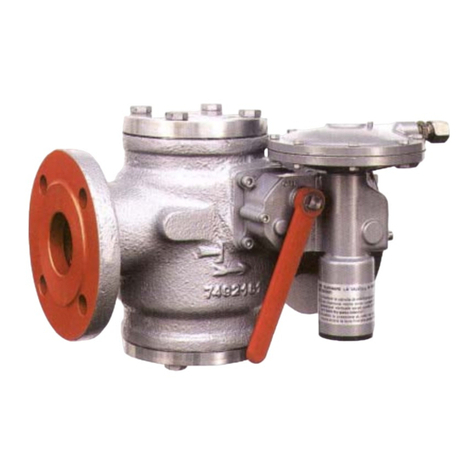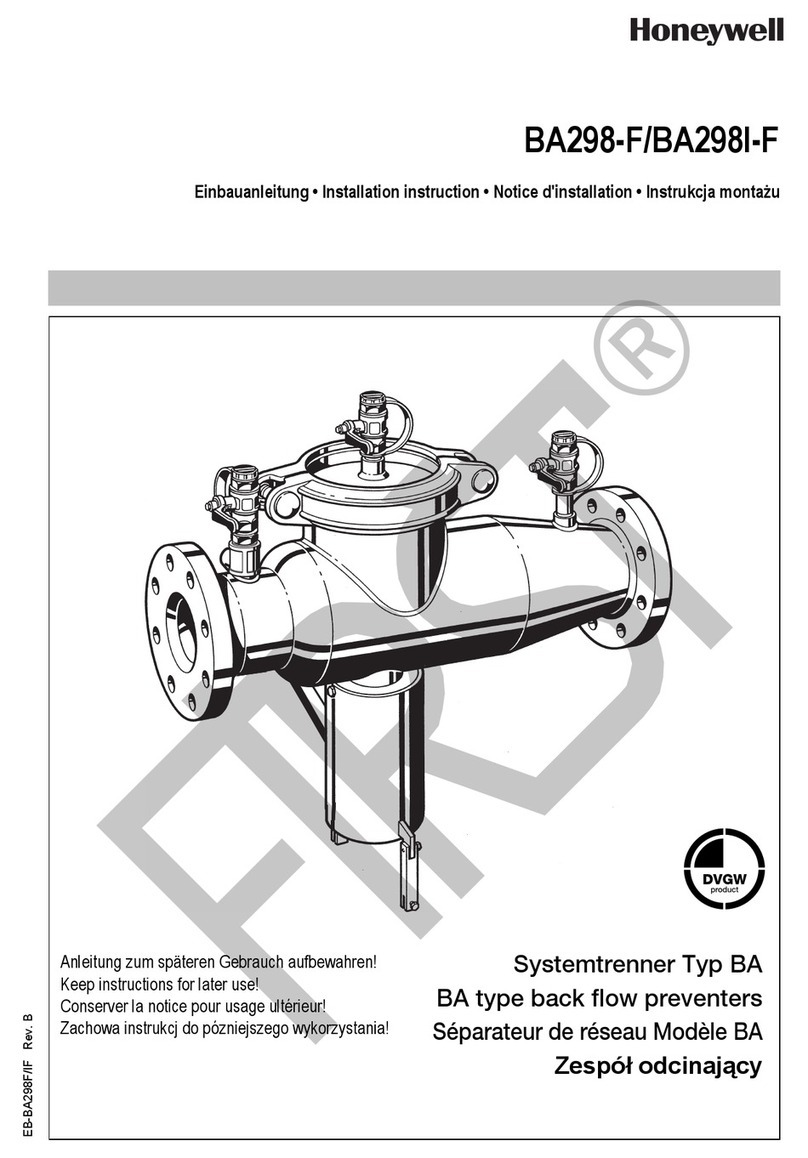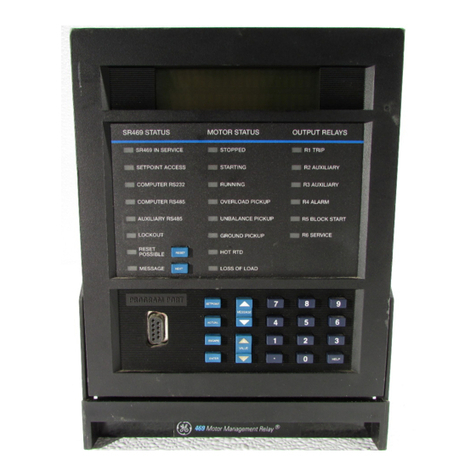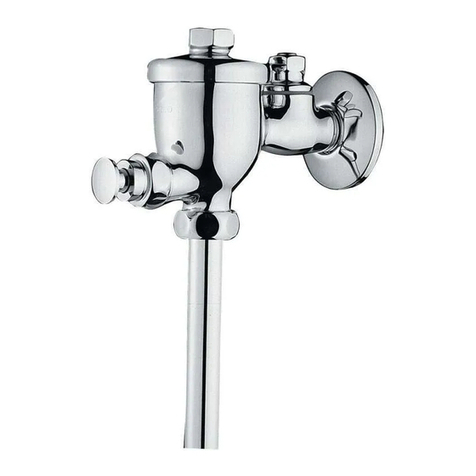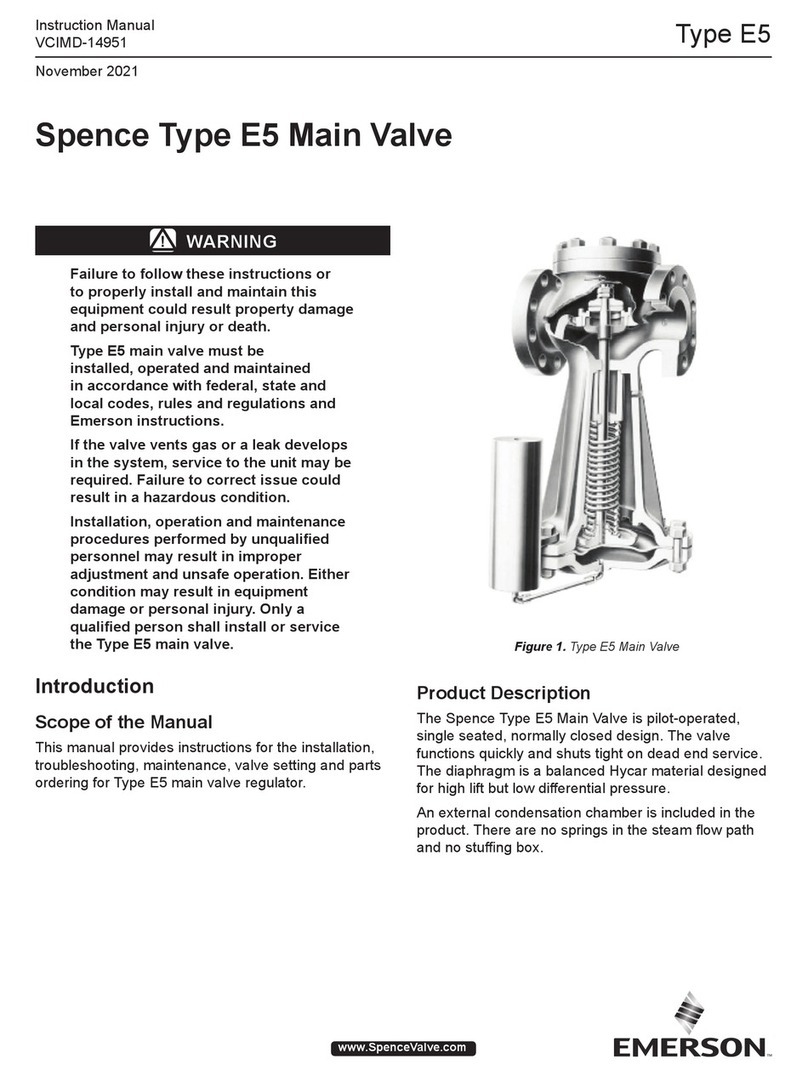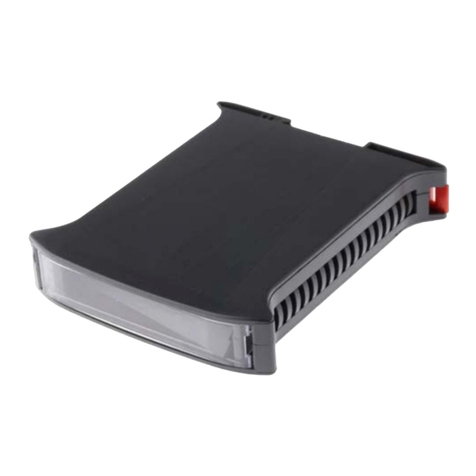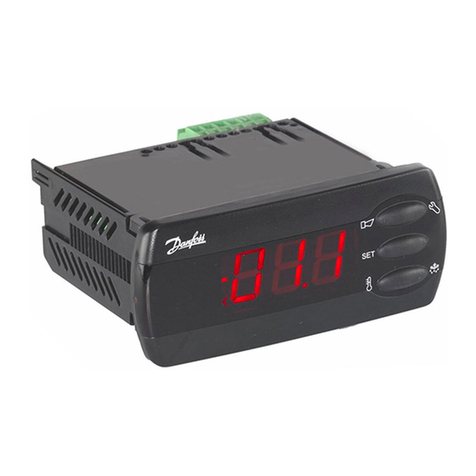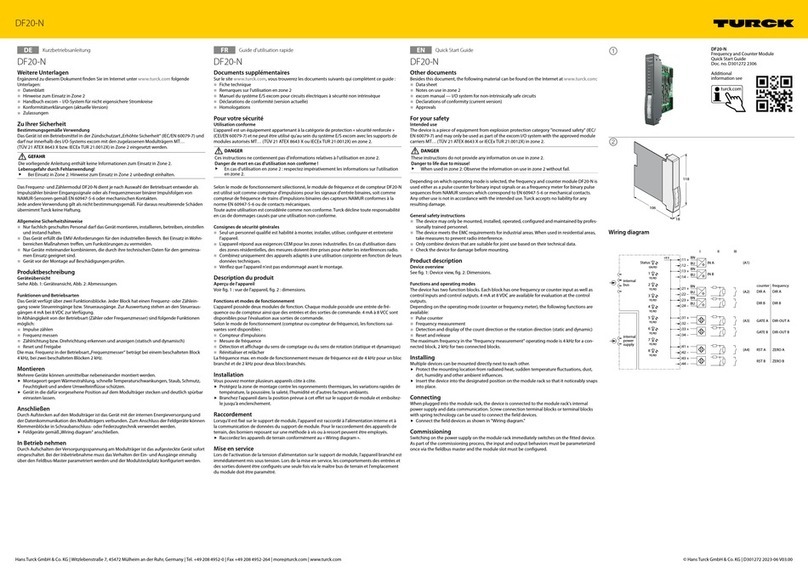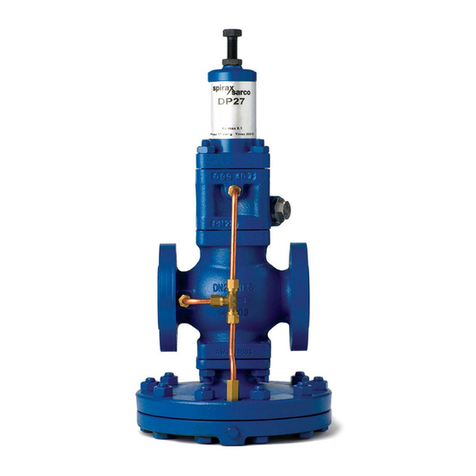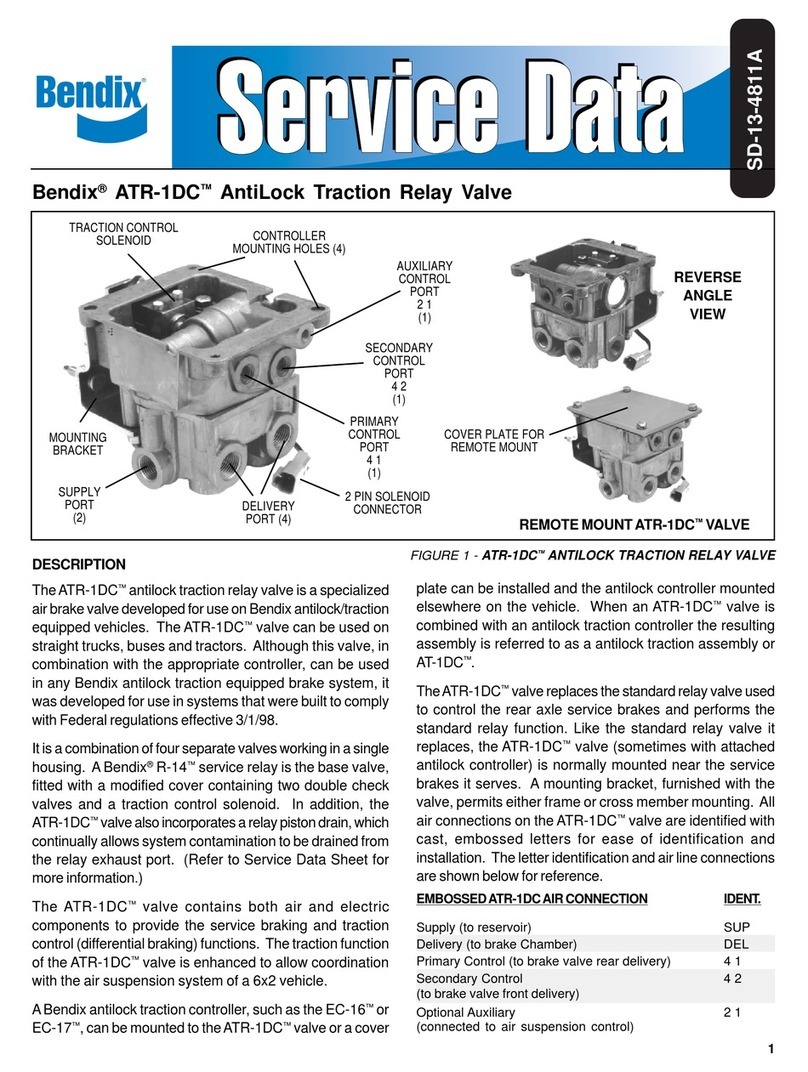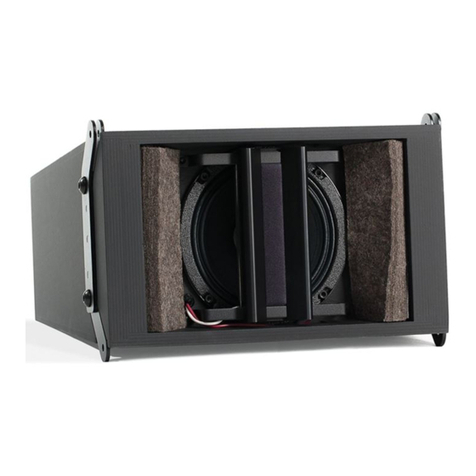Bartington CU1 User manual

www.bartington.com
INNOVATION IN MAGNETICS
Telephone: +44 (0)1993 706565 •Fax: +44 (0)1993 774813 •Email: [email protected] •Website: www.bartington.com
Bartington Instruments Ltd
5, 8, 10, 11 & 12 Thorney Leys Business Park
Witney, Oxford, OX28 4GE. England
®The copyright of this document is the property of Bartington Instruments Ltd.
Bartington is a registered trademark of Bartington Instruments Limited in the following countries: Australia, Brazil, Canada, China, European Union, India,
Israel, Japan, Mexico, New Zealand, Norway, Russia, Singapore, South Korea, Switzerland, Turkey, United Kingdom, United States of America and Vietnam.
Operation Manual for
CU1 Helmholtz Coil System
Control Unit
OM3224/4

BARTINGTON INSTRUMENTS
Page 2 of 21 OM3224/4
Table of Contents
1. About this Manual 3
1.1. Symbols Glossary 3
2. Safe Use 4
3. Introduction 4
4. CU1 Features 5
4.1. Front Panel 5
4.1.1. ON/OFF Power Switch with LED Indicator 5
4.1.2. Front Panel Connectors 5
4.2. Rear Panel 6
4.2.1. Rear Panel Connectors 6
5. Compatibility 6
6. CU1 Control Unit Installation 7
6.1. Test Assembly Location and Ventilation Requirements 7
6.2. CU1 Control Unit Connection to the PA1 Power Amplifier 7
6.2.1. Current Control Output 7
6.2.2. Current Monitor Input 7
6.3. Sensor Connection to CU1 Control Unit Device Under Test Input 7
6.4. Sensor Connection to CU1 Control Unit Auxiliary Input 8
6.5. CU1 Control Unit Connection to NI Acquisition Card 8
6.6. CU1 Control Unit Mains Power Supply 8
7. Powering Sequence 9
8. Troubleshooting, Care and Maintenance 9
9. Storage and Transport 9
10. Disposal 10
10.1. Waste Electrical and Electronic Equipment (WEEE) Regulations 10
Appendix A: Connecting the Components of the Helmholtz Coil System 11
Appendix B: Helmholtz Control Unit CU1 DAQ/PXI Connection 12
Appendix C: Guidance for Connection to Mains Supply 20

BARTINGTON INSTRUMENTS
Page 3 of 21 OM3224/4
1. About this Manual
This manual provides the information necessary to help customers install and operate the CU1
Control Unit. It is one component of the Bartington Instruments Helmholtz Coil System. This
manual should therefore be read in conjunction with:
• Compatible Helmholtz Coils Operation Manuals
• PA1 Control Power Amplifier Manual OM3225
• CU2 Closed-Loop Module (if applicable) OM3999
• Helmholtz Coil Control Software OM3596.
All manuals are available from the Helmholtz Coil System Operation Manual page. The relevant
products outline drawings can be found on the Helmholtz Coil System outline drawing page.
This manual should also be read in conjunction with the product brochure DS2613 which can
also be found on the product page.
Photographs of key components are included, labelled with numbers. A number in the text in
square brackets [ ] refers to that label.
Bartington Instruments cannot advise on the integration of this equipment with any third party
products.
1.1. Symbols Glossary
The following symbols used within this manual call your attention to specific types of
information:
WARNING: Indicates a situation in which serious bodily injury or death could result if the
warning is ignored.
Caution: Indicates a situation in which bodily injury or damage to your instrument, or both,
could result if the caution is ignored.
Identifies items that must be disposed of safely to prevent unnecessary damage to the
environment.
Note: A paragraph in this format provides useful supporting information on how to make
better use of your purchase.

BARTINGTON INSTRUMENTS
Page 4 of 21 OM3224/4
2. Safe Use
WARNING: The CU1 Control Unit is powered by mains electricity and contains uninsulated
parts. Ensure that the unit is properly earthed at all times. Ensure all local and national
codes on electrical installation and grounding are observed. Safety protection will be
impaired if the unit is used in a manner not specified in this manual.
WARNING: There are no customer serviceable components within this unit. The unit
should be opened by Bartington Instruments personnel only.
WARNING: This product is not qualified for use in explosive atmospheres or life support
systems. Consult Bartington Instruments for advice.
3. Introduction
The CU1 Control Unit constitute an interface unit between a Helmholtz Coil System and a
National Instruments-based control system. Signal corresponding to field generation are sent
to the PA1, whilst current monitor signals are return to the CU1. It also provides signal filtering
and power supply to one or two magnetometers connected to the Auxiliary and/or Device Under
Test inputs. Compatible NI cards can be directly connected to the back of the CU1 for ease of
interface.
The full Helmholtz Coil System consists of:
• HC1, HC2, HC9 or HC16 Helmholtz Coils: an assembly of up to three Helmholtz coils. See
related operation manuals. Ferronato Helmholtz Coils can also be operated through this
system.
• PA1 Power Amplifier. See OM3225.
• CU1 Control Unit: the control unit for the system which enables it to interface with a PC-
based test, measurement and control system.
• Optional CU2 Closed-Loop Module: allows active cancellation of external DC and AC
magnetic field disturbances using the CU2 Reference Magnetometer. See OM3999.
A diagram showing the connection of these separate items into one system is given in Appendix
A.
The CU1 can connect directly to a National Instruments acquisition card or PXI system to provide
a PC-based control system for the Helmholtz Coil System. A LabVIEW™-based Helmholtz Coil
Control Software is available from our website, and is designed to operate when the system is
running from a NI card, with the CU1 and PA1.

BARTINGTON INSTRUMENTS
Page 5 of 21 OM3224/4
4. CU1 Features
4.1. Front Panel
Figure 1. Front view of CU1 Control Unit.
Key
1. Current Control Output 4. Current Monitor Input
2. Auxiliary Input 5. ON/OFF power switch with LED indicator
3. Device Test Input
4.1.1. ON/OFF Power Switch with LED Indicator
The ON/OFF power switch [5] controls AC mains power to the CU1 Control Unit.
The LED indicator has two colour states (red or green) and is controlled by the user software.
4.1.2. Front Panel Connectors
Inputs
Auxiliary Input [2]: this is a single ended or differential input, which can be that of a three-axis
magnetic field sensor.
Device Test Input [3]: this is a single ended or differential input for a three-axis magnetic field
sensor to be tested. This sensor is also termed the Device Under Test (DUT).
Current Monitor Input [4]: this is a differential input for monitoring the current in the Helmholtz
Coil. This should be connected to the Current Monitor Output of the PA1 Power Amplifier.
Auxiliary and DUT inputs are provided with a switchable, analogue, anti-aliasing filter which can
be enabled via a National Instruments acquisition card connected to the CU1.
Details of the pin-outs are available in DR3320.
Outputs
Current Control Output [1]: this provides three differential analogue outputs to the PA1 Power
Amplifier which control the power to be applied to the Helmholtz Coil in order to generate and
regulate the required DC or AC magnetic field.
Details of the pin-outs are available on DR3320.
1 2 3 4 5

BARTINGTON INSTRUMENTS
Page 6 of 21 OM3224/4
4.2. Rear Panel
Figure 2. Rear view of CU1 Control Unit
Key
6. Mains input IEC socket 8. Connector 1
7. Earth terminal post 9. Connector 0
4.2.1. Rear Panel Connectors
Mains Input IEC Socket [6]: this is for connection of an IEC lead. See datasheet DS2613 for
supply voltage.
Earth terminal post [7]: if an appropriate earth/ground connection is not provided through the
mains supply lead, connect this terminal post to the National Instruments system chassis earth
terminal, the instrument rack earth, or a permanent earth ground.
Connector 0 [8]: this is a National Instruments system interface socket for connection to the
National Instruments system DAQ module.
Connector 1 [9]: as Connector 0.
5. Compatibility
The CU1 Control Unit is compatible with Bartington Instruments PA1 for use in Bartington
Helmholtz Coil System. The CU1 is also compatible for use with the CU2 Closed-Loop Module.
A range of National Instruments card can directly connect to the CU1. A non-exhaustive list of
compatible card is included here:
• NI-PXI-6289 Card + compatible Chassis and Controller and connection cables
• NI-PCIe-6353 + connection cables
• NI-USB-6363 + connection cables
6789

BARTINGTON INSTRUMENTS
Page 7 of 21 OM3224/4
6. CU1 Control Unit Installation
6.1. Test Assembly Location and Ventilation Requirements
The CU1 has no forced ventilation requirements and can be sited typically on top of the PA1. The
CU1 and PA1 should be located at least 3m from the Helmholtz Coils to avoid interferences.
Note: For optimum results, the ambient temperature should not exceed the maximum
specified in the data sheet.
6.2. CU1 Control Unit Connection to the PA1 Power Amplifier
6.2.1. Current Control Output
Connect the CU1 Current Control Output [1] to the PA1 Current Control Input using the cable
provided. Labels on the cable identify each end of the cable.
6.2.2. Current Monitor Input
Connect the Current Monitor Input [4] to the PA1 Current Monitor Output using the cable
provided. Labels on the cable identify each end of the cable.
The Current Monitor signal is sent to the National Instruments card for digitisation and is
available in the Helmholtz Coil Control Software.
6.3. Sensor Connection to CU1 Control Unit Device Under Test Input
Both single-ended and differential output sensors can be connected to the Device Under Test
input. The supply voltage to the sensor can be set by the user. Both the selection of the sensor
output type and the supply voltage can be set through the software and is controlled via one of
the digital I/O line on the National Instruments card.
The Device Under Test output is sent to the National Instruments card for digitisation and is
available in the Helmholtz Coil Control Software.
Refer to the datasheet DS2613 for details of the supply voltage limits, and the analogue input
range.
Ensure to not apply a supply voltage exceeding the connected sensor’s rating.
An extension cable to connect to the sensor’s cable to the CU1 Device Under Test port is supplied
with the CU1. This is to be used in case the sensor cable is not long enough.
Note: Bartington Instruments can supply suitable cables for all Bartington Instruments
compatible magnetic field sensors.

BARTINGTON INSTRUMENTS
Page 8 of 21 OM3224/4
6.4. Sensor Connection to CU1 Control Unit Auxiliary Input
Both single-ended and differential output sensors can be connected to the Auxiliary input. The
selection of the sensor output type is set through the software and is controlled via one of the
digital I/O line on the National Instruments card. The supply voltage to the sensor is set to ±15V
and cannot be changed by the user.
The Auxiliary output signal is sent to the National Instruments card for digitisation and is
available in the Helmholtz Coil Control Software.
Refer to the datasheet DS2613 for details of the supply voltage limits, and the analogue input
range.
Ensure to not apply a supply voltage exceeding the connected sensor’s rating.
Self-resetting semiconductor fuses limit the current to each Auxiliary power rail output,
protecting the connected sensor. The fuses can be reset by switching off the unit and allowing it
to cool for a few minutes.
Note: Bartington Instruments can supply suitable cables for all Bartington Instruments
compatible magnetic field sensors.
6.5. CU1 Control Unit Connection to NI Acquisition Card
The CU1 Control Unit can be connected to a National Instruments interface cards using two
shielded cables manufactured by National Instruments (SHC68-68-EPM cables). Details of the
pin-out of the CU1 to the acquisition card can be found in Appendix B.
The CU1 will emit a beep when connection to a National Instruments acquisition card and PC is
not detected. The beep will also sound at powering up until the Helmholtz Coil Control Software
is started.
6.6. CU1 Control Unit Mains Power Supply
Details of suitable power supply for the CU1 Control Unit are provided in the product brochure,
with the supply beeing earthed/grounded. The supply from a standard wall outlet should be
suitable in most countries. A compatible mains cable supplied with a UK 13A plug, an EU plug or
bare ends can be specified at the time of ordering. In the latter case, refer to Appendix C.
A slow blow fuse is fitted internally, to limit the mains supply current to the power supply
modules.
Caution: If the power supply fuse has blown, this indicates a faulty unit. Please contact
Bartington Instruments on +44 1993 776813.

BARTINGTON INSTRUMENTS
Page 9 of 21 OM3224/4
7. Powering Sequence
Before powering the system, you should ensure that all the connections between the Helmholtz
Coil and the PA1, the PA1 and the CU1 and/or CU2 as well as the CU1 to a suitable National
Instruments acquisition card (or PXI-system) are done.
Once all connections are done, the following sequence should be used:
• Power the PC and National Instruments acquisition card or PXI system
• If using a CU2, ensure that the CU2 Reference Magnetometer is connected to the CU2 Module
• Power the CU1
• Power the PA1
To power down the system, the reverse sequence should be followed.
Please note that the equipment should be left to warm up for at least 12 hours before any of the
calibration is undertaken.
8. Troubleshooting, Care and Maintenance
In the event of any apparent malfunction, please email service@bartington.com, or telephone
the Bartington Instruments service team on +44 (0)1993 706565.
Note: Fault finding by customers may invalidate the warranty.
9. Storage and Transport
The CU1 Control Unit should be handled with care.
Bartington Instruments has supplied this product in appropriate packaging for transporting it
safely. This packaging should be used for any future transport.
Refer to datasheet DS2613 for this product’s maximum environmental, electrical and mechanical
ratings.
Caution: Exceeding the maximum environmental ratings may cause irreparable damage to
the equipment.

BARTINGTON INSTRUMENTS
Page 10 of 21 OM3224/4
10. Disposal
This product should not be disposed of in domestic or municipal waste. For information about
disposing of this product safely, check local regulations for disposal of electrical / electronic
products.
10.1. Waste Electrical and Electronic Equipment (WEEE) Regulations
This product complies fully with Restriction of the Use of Certain Hazardous Substances in
Electrical and Electronic Equipment (RoHS) and WEEE Regulations current at the time of
writing.

BARTINGTON INSTRUMENTS
Page 11 of 21 OM3224/4
Appendix A: Connecting the Components of the Helmholtz Coil System
PXI CHASSIS
CU1
PA1
DAQ DAQ
Connector 0 Connector 1
Current
Control
Output
Aux
Input
Current
Monitor
Input
Device
Test
Input
Current
Control
Input
Current
Monitor
Output
DUT
Sensor
Optional
aux sensor
if required
HC1
Current
Output to
HC1/HC2

BARTINGTON INSTRUMENTS
Page 12 of 21 OM3224/4
Appendix B: Helmholtz Control Unit CU1 DAQ/PXI Connection
Analogue Outputs
Signal
PXI function Pin (Cn1)
Auxiliary X output AI.16 68
Auxiliary Y output AI.17 33
Auxiliary Z output AI.18 65
Device Under Test X output AI.19 30
Device Under Test Y output AI.20 28
Device Under Test Z output AI.21 60
No Connection AI.22 25
No Connection AI.23 57
No Connection AI.24 34
No Connection AI.25 66
No Connection AI.26 31
No Connection AI.27 63
Current Monitor X output AI.28 61
Current Monitor Y output AI.29 26
Current Monitor Z output AI.30 58
Power Supply Monitor AI.31 23
Analogue Output Reference AI.Gnd 64
Analogue Inputs
Signal
PXI function Pin (Cn1)
Y Channel Drive Signal AO.2 Cn1.22
X Channel Drive Signal AO.3 Cn1.21
Z Channel Drive Signal AO.1 Cn0.21
Power Supply Control Signal AO.0 Cn0.22
Digital Control Inputs
Signal
PXI function Pin (Cn1)
AUX self-Test Enable P0.8 52
Device Under Test Self-Test Enable P0.9 17
Device Under Test Input Gain P0.10 49
Reserved P0.11 47
Reserved P0.12 19
LED colour P0.13 51
Reserved P0.14 16
Alarm Buzzer P0.15 48
PSU Monitor Select 0 P0.16 11
PSU Monitor Select 1 P0.17 10

BARTINGTON INSTRUMENTS
Page 13 of 21 OM3224/4
PSU Monitor Select 2 P0.18 43
No Connection P0.19 42
No Connection P0.20 41
PSU Monitor Enable P0.21 6
No Connection P0.22 5
No Connection P0.23 38
Auxiliary Input select P0.24 37
Device Under Test Input Select P0.25 3
Device Under Test Input Polarity P0.26 45
Reserved P0.27 46
Reserved P0.28 2
Filter Enable P0.29 40
Filter Select 0 P0.30 1
Filter select 1 P0.31 39
Input Select
Signal PXI function Pin
Device Under Test Input Select P0.25 3
Auxiliary Input select P0.24 37
0 Single ended / unbalanced input mode
1 Differential / balanced input mode
Device Self-Test
Signal PXI function Pin
AUX Self-Test Enable P0.8 52
Device Under Test Self-Test Enable P0.9 17
0 Device in self-test mode
1 Device in normal operating mode
Device Input Polarity
Signal PXI function Pin
Device Under Test Input Polarity P0.26 45
0 Device input normal polarity
1 Device input signal polarity inverted

BARTINGTON INSTRUMENTS
Page 14 of 21 OM3224/4
Device Input gain
Signal PXI function Pin
Device Under Test Input Gain P0.10 49
0 Device Under Test Input Gain = 100
1 Device Under Test Input Gain = 1
Input Filter
Signal PXI function Pin
Filter Enable P0.29 40
Filter Select 0 P0.30 1
Filter select 1 P0.31 39
Select Inputs Nominal frequency at –3dB
point of Selected filter
0 1 EN
0 0 0 10Hz
1 0 0 100Hz
0 1 0 1KHz
1 1 0 10KHz
X X 0 No Filter
Power Supply Monitor
Signal PXI function Pin
PSU Monitor Enable P0.21 6
PSU Monitor Select 0 P0.16 11
PSU Monitor Select 1 P0.17 10
PSU Monitor Select 2 P0.18 43
0 1 2 EN
X X X 0 Output Disabled (voltage uncertain)
0 0 1 1 ¬Device under test negative supply
voltage
1 0 1 1 Device under test negative supply
current
0 1 1 1 ¬Device under test positive supply
Voltage
1 1 1 1 ¬Device under test positive supply
current
X X 0 1 Invalid input (voltage uncertain)

BARTINGTON INSTRUMENTS
Page 15 of 21 OM3224/4
LED
Signal PXI function Pin
LED colour P0.13 51
0 Led colour = Red
1 Led colour = Green
Alarm
Signal PXI function Pin
Alarm Buzzer P0.15 48
0 Alarm active
1 Alarm silent
Notes
Logic inputs are defined as
0 logic Low (0V)
1 logic High (+5V)
X State has no effect
The National Instruments DAQ analogue outputs are single ended with a common reference
connection whilst its analogue inputs should be operated in NRSE (Non-referenced single-ended
mode), refer to the relevant National instruments DAQ User manual for further information.
The power supply to the DUT has a dual rail output with a range which is twice the level of the
control voltage input from the NI DAQ system. The control voltage range of 0 to +/-10V will
correspond to a voltage output of 0 to +/-20V from the power supply.
The X, Y & Z Channel drive signals are balanced outputs with a range twice that of the control
voltage input from the NI DAQ system. The control voltage range of 0 to +/-10V will correspond to
a voltage output on the drive signals of 0 to +/-20V.
The power supply monitor voltage returns half the actual measured voltage.
The power supply currents return the current measured across a 1 Ohm (1%) resistor.
Reserved lines may be used for later enhancements by Bartington Instruments.
All Reserved lines must be held at logic High (+5V).
Lines marked No Connection Should be left disconnected.

BARTINGTON INSTRUMENTS
Page 16 of 21 OM3224/4
CN0 Connections pin-out
Pin Control Unit Signal PXI pin Name In/out Range
1 Reserved P2.6 In 0/5V Digital
2 Reserved P2.4 In 0/5V Digital
3 Reserved P2.1 In 0/5V Digital
4 Digital Ground D.Gnd Ground 0V Nominal
5 Reserved P1.6 In 0/5V Digital
6 Reserved P1.5 In 0/5V Digital
7 Digital Ground D.Gnd Ground 0V Nominal
8 No Connection +5V
9 Digital Ground D.Gnd Ground 0V Nominal
10 Reserved P1.1 In 0/5V Digital
11 Reserved P1.0 In 0/5V Digital
12 Digital Ground D.Gnd Ground 0V Nominal
13 Digital Ground D.Gnd Ground 0V Nominal
14 No Connection +5V
15 Digital Ground D.Gnd Ground 0V Nominal
16 Reserved P0.6 In 0/5V Digital
17 Reserved P0.1 In 0/5V Digital
18 Digital Ground D.Gnd Ground 0V Nominal
19 Reserved P0.4 In 0/5V Digital
20 Reserved APFI 0 In 0/5V Digital
21 Z Axis Drive AO.1 In ±10V analogue
22 Power Supply Drive AO.0 In ±10V analogue
23 No Connection AI.15 Out ±10V analogue
24 analogue Output Ground AI.Gnd Ground 0V Nominal
25 No Connection AI.6 Out ±10V analogue
26 No Connection AI.13 Out ±10V analogue
27 analogue Output Ground AI.Gnd Ground 0V Nominal
28 No Connection AI.4 Out ±10V analogue
29 analogue Output Ground AI.Gnd Ground 0V Nominal
30 No Connection AI.3 Out ±10V analogue
31 No Connection AI.10 Out ±10V analogue
32 analogue Output Ground AI.Gnd Ground 0V Nominal
33 No Connection AI.1 Out ±10V analogue
34 No Connection AI.8 Out ±10V analogue
35 Digital Ground D.Gnd Ground 0V Nominal
36 Digital Ground D.Gnd Ground 0V Nominal
37 Reserved P2.0 In 0/5V Digital
38 Reserved P1.7 In 0/5V Digital
39 Reserved P2.7 In 0/5V Digital
40 Reserved P2.5 In 0/5V Digital

BARTINGTON INSTRUMENTS
Page 17 of 21 OM3224/4
41 Reserved P1.4 In 0/5V Digital
42 Reserved P1.3 In 0/5V Digital
43 Reserved P1.2 In 0/5V Digital
44 Digital Ground D.Gnd Ground 0V Nominal
45 Reserved P2.2 In 0/5V Digital
46 Reserved P2.3 In 0/5V Digital
47 Reserved P0.3 In 0/5V Digital
48 Reserved P0.7 In 0/5V Digital
49 Reserved P0.2 In 0/5V Digital
50 Digital Ground D.Gnd Ground 0V Nominal
51 Reserved P0.5 In 0/5V Digital
52 Reserved P0.0 In 0/5V Digital
53 Digital Ground D.Gnd Ground 0V Nominal
54 analogue Input Ground AO.Gnd Ground 0V Nominal
55 analogue Input Ground AO.Gnd Ground 0V Nominal
56 analogue Output Ground AI.Gnd Ground 0V Nominal
57 No Connection AI.7 Out ±10V analogue
58 No Connection AI.14 Out ±10V analogue
59 analogue Output Ground AI.Gnd Ground 0V Nominal
60 No Connection AI.5 Out ±10V analogue
61 No Connection AI.12 Out ±10V analogue
62 No Connection AI. Sense Ground 0V Nominal
63 No Connection AI.11 Out ±10V analogue
64 analogue Output Ground AI.Gnd Ground 0V Nominal
65 No Connection AI.2 Out ±10V analogue
66 No Connection AI.9 Out ±10V analogue
67 analogue Output Ground AI.Gnd Ground 0V Nominal
68 No Connection AI.0 Out ±10V analogue
CN1 Connections pin-out
Pin Control Unit Signal PXI pin Name In/out Range
1 Filter select 0 P0.30 In 0/5V Digital
2 Reserved P0.28 In 0/5V Digital
3 Device Under Test Input
Select
P0.25 In 0/5V Digital
4 Digital Ground D.Gnd Ground 0V Nominal
5 No Connection P0.22 In 0/5V Digital
6 PSU Monitor Enable P0.21 In 0/5V Digital
7 Digital Ground D.Gnd Ground 0V Nominal
8 No Connection +5V
9 Digital Ground D.Gnd Ground 0V Nominal

BARTINGTON INSTRUMENTS
Page 18 of 21 OM3224/4
10 PSU Monitor Select 1 P0.17 In 0/5V Digital
11 PSU Monitor Select 0 P0.16 In 0/5V Digital
12 Digital Ground D.Gnd Ground 0V Nominal
13 Digital Ground D.Gnd Ground 0V Nominal
14 No Connection +5V
15 Digital Ground D.Gnd Ground 0V Nominal
16 Reserved P0.14 In 0/5V Digital
17 Device Under Test Self-Test P0.9 In 0/5V Digital
18 Digital Ground D.Gnd Ground 0V Nominal
19 No Connection P0.12 In 0/5V Digital
20 No Connection AFPI 1 In 0/5V Digital
21 Y Channel Drive Signal AO.3 In ±10V analogue
22 X Channel Drive Signal AO.2 In ±10V analogue
23 PSU Monitor Out AI.31 Out ±10V analogue
24 Analogue Output Ground AI.Gnd Ground 0V Nominal
25 No Connection AI.22 Out ±10V analogue
26 Current Monitor Y output AI.29 Out ±10V analogue
27 Analogue Output Ground AI.Gnd Ground 0V Nominal
28 Device Under Test, Y output AI.20 Out ±10V analogue
29 Analogue Output Ground AI.Gnd Ground 0V Nominal
30 Device Under Test X output AI.19 Out ±10V analogue
31 No Connection AI.26 Out ±10V analogue
32 Analogue Output Ground AI.Gnd Ground 0V Nominal
33 Auxiliary Y output AI.17 Out ±10V analogue
34 No Connection AI.24 Out ±10V analogue
35 Digital Ground D.Gnd Ground 0V Nominal
36 Digital Ground D.Gnd Ground ±10V analogue
37 Auxiliary Input select P0.24 In 0/5V Digital
38 No Connection P0.23 In 0/5V Digital
39 Filter Select 1 P0.31 In 0/5V Digital
40 Filter enable P0.29 In 0/5V Digital
41 No Connection P0.20 In 0/5V Digital
42 No Connection P0.19 In 0/5V Digital
43 PSU Monitor Select 2 P0.18 In 0/5V Digital
44 Digital Ground D.Gnd Ground 0V Nominal
45 Device Under Test Input
Polarity
P0.26 In 0/5V Digital
46 Reserved P0.27 In 0/5V Digital
47 Reserved P0.11 In 0/5V Digital
48 Alarm Buzzer P0.15 In 0/5V Digital
49 Device Under Test Input Gain P0.10 In 0/5V Digital
50 Digital Ground D.Gnd

BARTINGTON INSTRUMENTS
Page 19 of 21 OM3224/4
51 LED P0.13 In 0/5V Digital
52 AUX Test Enable P0.8 In 0/5V Digital
53 Digital Ground D.Gnd Ground 0V Nominal
54 Analogue Input Ground AO.Gnd Ground 0V Nominal
55 Analogue Input Ground AO.Gnd Ground 0V Nominal
56 Analogue Output Ground AI.Gnd Ground 0V Nominal
57 No Connection AI.23 Out ±10V analogue
58 Current Monitor Z output AI.30 Out ±10V analogue
59 Analogue Output Ground AI.Gnd Ground 0V Nominal
60 Device Under Test Z output AI.21 Out ±10V analogue
61 Current Monitor X output AI.28 Out ±10V analogue
62 Analogue Output Reference AI. Sense 2 Ground 0V Nominal
63 No Connection AI.27 Out ±10V analogue
64 Analogue Output reference AI.Gnd Ground 0V Nominal
65 Auxiliary Z output AI.18 Out ±10V analogue
66 No Connection AI.25 Out ±10V analogue
67 Analogue Output Ground AI.Gnd Ground 0V Nominal
68 Auxiliary X output AI.16 Out ±10V analogue

BARTINGTON INSTRUMENTS
Page 20 of 21 OM3224/4
Appendix C: Guidance for Connection to Mains Supply
1. Ensure that the mains feed is from a clean AC supply with the following characteristics:-
Voltage Range 100V to 240V AC
Frequency 50/60Hz
It is highly recommended that this mains feed is via an appropriate Residual Current Circuit
Breaker, rated at 30mA trip current. This must comply with local regulations.
2. The mains input connectors are as follows:-
Device Input Connector Mating Cable Connector
Power Amplifier PA1 IEC C20 IEC C19
Control Unit CU1 IEC C14 IEC C13
These cables are available in specific versions for most countries.
3. If an un-terminated IEC connector lead is supplied with the equipment, the wires must be
wired accordingly:-
BROWN LIVE
BLUE NEUTRAL
GREEN/YELLOW EARTH
4. It is essential that the control unit CU1 and the Power Amplifier PA1 are properly earthed at all
times.
5. It is recommended that the mains to each unit is supplied via an appropriate mains fuse:-
Power Amplifier PA1 13A
Control Unit CU1 13A
This is appropriate for the use over the whole supply voltage range.
6. This installation MUST be carried out by a trained, competent person.
7. Before initial switch-on, an appropriate earth bonding test should be performed to ensure a
robust earth connection.
8. To disconnect mains power, the mains supply cord must be removed from the rear panel
mains input connector.
Table of contents


